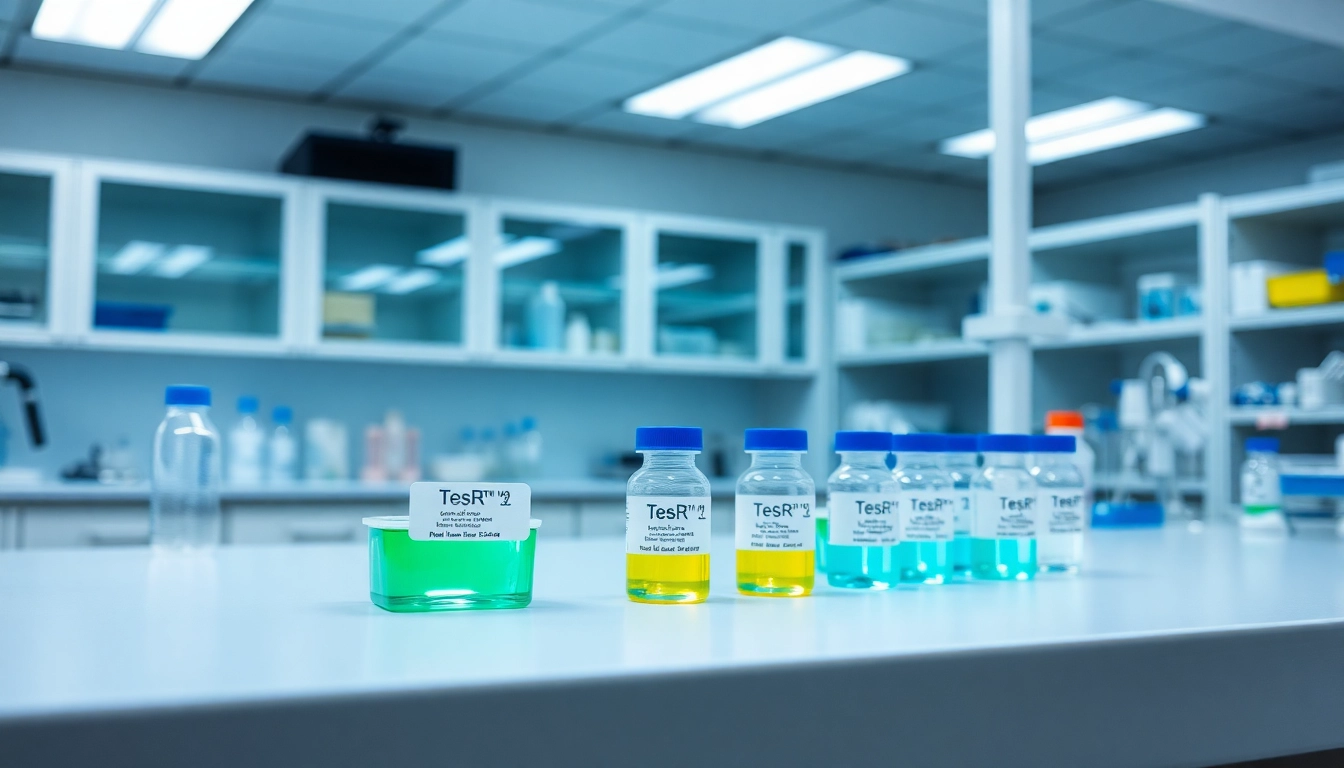Understanding TeSR™ Feeder-Free Media
In the burgeoning field of stem cell research, the significance of choosing the right culture medium cannot be overstated. All check items related to the identification of appropriate media solutions can greatly influence research outcomes. TeSR™ feeder-free media are designed to provide a seamless, reproducible environment for the growth and differentiation of pluripotent stem cells (PSCs). These media have revolutionized cell culture practices, providing researchers with the means to cultivate human embryonic stem cells (hESCs) and induced pluripotent stem cells (iPSCs) without the complexities associated with feeder systems. This article delves into the nuances of TeSR™ media, highlighting their applications, benefits, and product variety.
What is TeSR™ and Its Role in Stem Cell Culture?
TeSR™, short for “Tissue Stem Cell Reprogramming,” is a line of feeder-free culture media developed to promote the maintenance and differentiation of human pluripotent stem cells (hPSCs). Originating from the pioneering research of Dr. James Thomson and his colleagues, TeSR™ media allow researchers to maintain cell lines with high pluripotency and genomic integrity. The fundamental design of TeSR™ media supports optimal growth conditions for hESCs and iPSCs, mitigating the variabilities often associated with traditional feeder layers, such as contamination and inconsistent cellular behavior.
Benefits of Feeder-Free Cultures in hPSC Research
The transition to feeder-free cultures offers numerous advantages:
- Experimental Consistency: Feeder layers can introduce batch-to-batch variability in experiments. TeSR™ media minimize these variables, enabling reproducibility in research.
- Scalability: Feeder-free systems like TeSR™ can be easily scaled up, making them suitable for large-scale applications in research and therapeutic contexts.
- Simplified Handling: With no need for cell passage onto feeder layers, the handling process is streamlined, allowing researchers to focus more on experimentation rather than laborious maintenance.
- Enhanced Differentiation Potential: Feeder-free culture conditions often lead to improved maintenance of stem cell characteristics, resulting in more effective differentiation protocols.
Common Applications of TeSR™ Media
TeSR™ media are utilized across various applications in stem cell research:
- Induced Pluripotent Stem Cell (iPSC) Generation: The reprogramming of somatic cells into iPSCs through defined protocols can be achieved using specific TeSR™ formulations.
- Maintenance of hPSCs: The regular growth and maintenance of hESCs and iPSCs in a defined environment.
- Cell Differentiation: TeSR™ media support specialized differentiation protocols, leading to targeted cell lineage outcomes such as cardiomyocytes or pancreatic cells.
- Cryopreservation: Certain TeSR™ formulations are optimized for preserving cell viability during freezing and thawing, ensuring the longevity of cell lines.
Types of TeSR™ Media Products
The TeSR™ product line offers several media tailored to meet the diverse needs of researchers:
Overview of mTeSR™ Plus and Its Unique Features
mTeSR™ Plus is a next-generation feeder-free medium designed to simplify the maintenance of pluripotent stem cells:
- Stabilized Components: It contains stabilized FGF2 along with additional buffering agents to mitigate pH changes due to cellular metabolism.
- Weekend-Free Culture: Laboratories now have the option to culture cells without the need for weekend media changes, enhancing researcher productivity.
- cGMP Compliance: Manufactured under current Good Manufacturing Practices (cGMP), this medium is designed for clinical applications, ensuring the highest safety and quality standards.
Differentiating Between TeSR™-AOF and mTeSR™1
TeSR™-AOF (Animal Origin-Free) offers a unique composition suited for researchers concerned about contamination from animal products:
- Animal Origin-Free: TeSR™-AOF is guaranteed not to contain any human or animal products at the secondary manufacturing level, addressing safety concerns in regenerative medicine.
- Enhanced Differentiation: Similar to mTeSR™1, TeSR™-AOF maintains pluripotency but is specifically tailored for applications requiring stringent compositional controls.
Utilizing ReproTeSR™ for iPS Cell Reprogramming
ReproTeSR™ is optimized specifically for reprogramming somatic cells into induced pluripotent stem cells (iPSCs).
- Enhanced Reprogramming Efficiency: ReproTeSR™ provides the necessary components to facilitate effective reprogramming, offering improved viability and pluripotency of iPSCs.
- Tailored for Use: This media formulation allows for the transition from somatic cells to iPSCs while ensuring high-quality culture conditions are maintained throughout.
Application Techniques for Effective Culturing
Applying TeSR™ media effectively involves stringent protocols and techniques:
Step-by-Step Protocol for Using TeSR™ Media
- Preparation: Allow media to equilibrate at room temperature and ensure all supplements are added according to the protocol.
- Cell Seeding: Seed cells at the recommended density, ensuring even distribution across the culture surface.
- Incubation: Place cells in a humidified incubator at 37°C with 5% CO2, and monitor closely to maintain optimal conditions.
- Regular Media Change: Change the medium every 2-3 days, ensuring minimum disruption to the cell layer.
Maintaining Cell Quality with Regular Media Changes
To ensure optimal cell growth and pluripotency, regular media changes are crucial:
- Timing: Studies indicate that cells should be fed at least every 48-72 hours to maintain health and viability.
- Technique: Use a sterile technique when replacing media to avoid contamination and maintain sterile cultures.
Cryopreservation Best Practices with FreSR™
Cryopreservation is vital for long-term storage of valuable cell lines:
- Optimal Freezing Protocol: Follow a slow freezing protocol using FreSR™ to ensure cell integrity is preserved during the freezing process.
- Thawing Techniques: Rapid thawing in a water bath at 37°C is recommended to minimize cryo-damage.
Comparative Analysis of Stem Cell Culture Media
Understanding how TeSR™ media compares with competitor products is essential for making informed choices:
How TeSR™ Media Stacks Against Competitor Products
TeSR™ media stand out in several key aspects:
- Reproducibility: TeSR™ media are known for their consistent performance across different research labs and conditions, a crucial factor for reproducible research.
- Published Use: TeSR™ media are extensively cited in scientific literature, demonstrating their acceptance in the scientific community.
Clinical Relevance: Regulatory Compliance and Safety
As research moves toward clinical applications, regulatory compliance becomes paramount. TeSR™ Plus and TeSR™-AOF are manufactured under cGMP, ensuring adherence to safety regulations that govern cell culture products intended for therapeutic use.
Measuring Success in Pluripotent Stem Cell Culture
Key performance indicators to evaluate the success of using TeSR™ media include:
- Pluripotency Assessment: Regular assessment of stem cell morphology, differentiation potential, and expression of pluripotency markers.
- Population Doubling Time: Measuring the doubling time gives insights into the health and vitality of cell cultures.
Expert Insights on Stem Cell Differentiation
The journey from pluripotent stem cells to specific cell types is intricate. Expert insights guide this process.
Interviews with Leading Researchers in the Field
Insights from researchers like Dr. Joseph C. Wu, Dr. Andrew Elefanty, and Dr. Robert Zweigerdt underline the importance of media selection in differentiation protocols, demonstrating real-world applications of TeSR™ products in advancing science.
Targeting Specific Cell Types with TeSR™ Products
Through tailored protocols using TeSR™ media, researchers can direct differentiation towards specific outcomes, including:
- Hematopoietic Cells: Utilizing data from clinical trials to inform protocols for effective hematopoietic differentiation.
- Cardiac Cells: Focused media formulations enable targeted differentiation towards cardiomyocytes for therapeutic purposes.
Resource Hub for Continuing Education in Stem Cell Technologies
The landscape of stem cell research is ever-evolving. STEMCELL Technologies provides extensive educational resources, webinars, and publications to keep researchers updated on the latest advancements and techniques. Engaging with these resources ensures that practitioners stay at the forefront of hPSC research and applications.















Leave a Reply